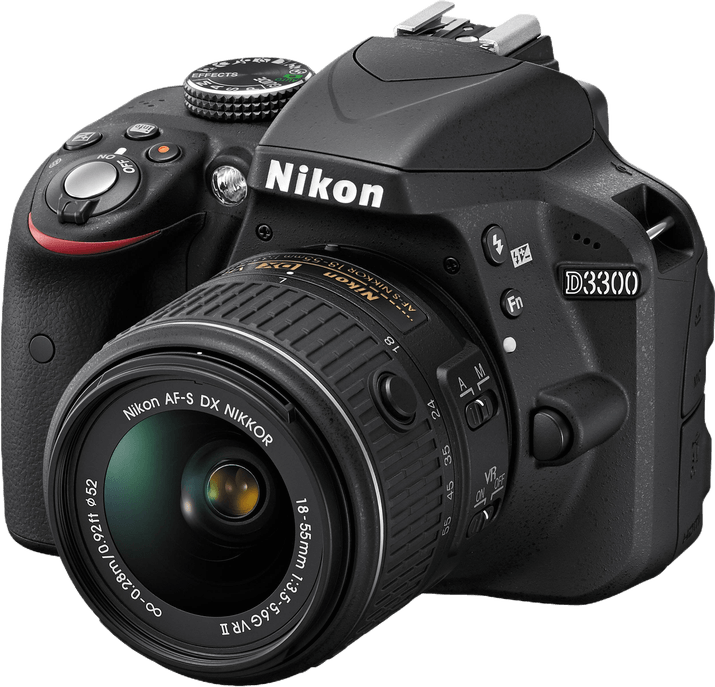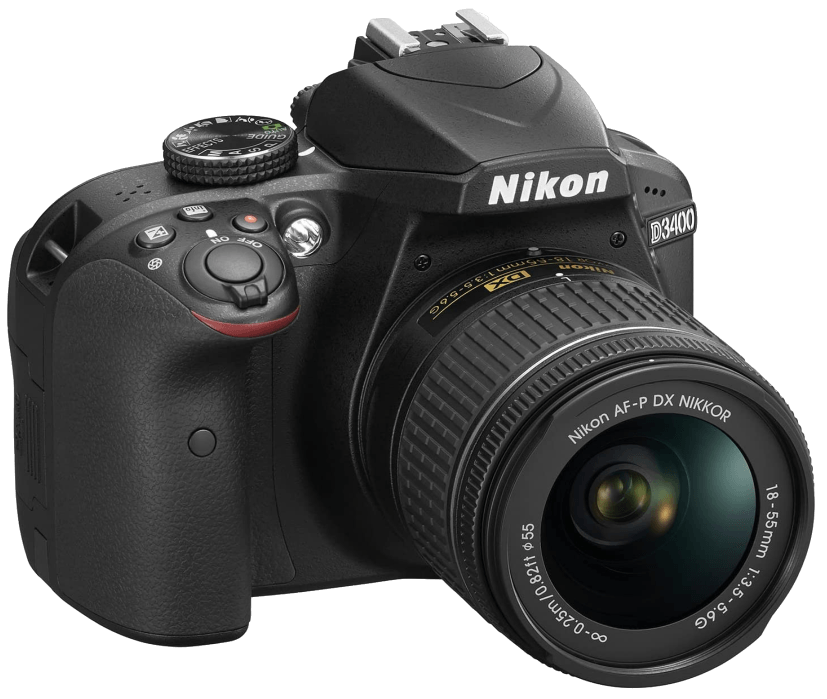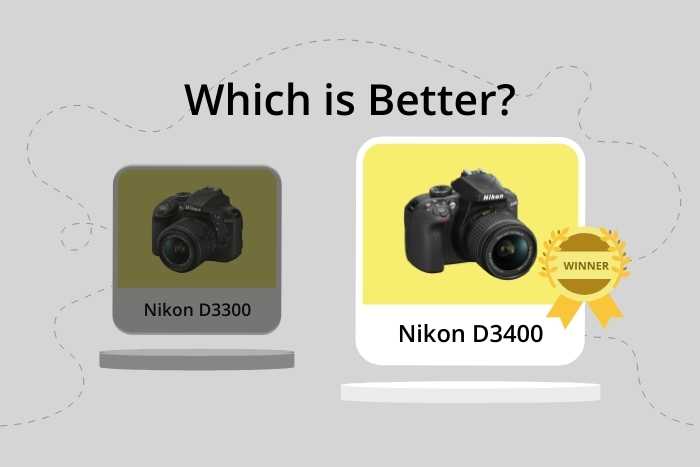Nikon D3300 vs D3400 Comparison
Nikon D3300

Nikon D3400

The Nikon D3400 emerges as the winner with a score of 61/100, while the Nikon D3300 scores 55/100. Both cameras are DSLR types, announced in 2014 and 2016, respectively. They share the same launch price of $650 and have identical camera sizes (124 x 98 x 76mm). The key differences lie in their specifications and performance.
The Nikon D3400 outshines the D3300 with its better image quality and longer battery life. This makes it more suitable for capturing stunning images without worrying about charging frequently. On the other hand, the Nikon D3300 is lighter, weighing 430g compared to the D3400’s 445g, making it slightly more comfortable to carry around.
Taking these factors into account, the Nikon D3400 is the better option for those seeking improved image quality and battery life, while the Nikon D3300 is a decent choice for photographers who prioritize a lighter camera. Both cameras offer great value for their price, but the D3400’s superior performance earns it the higher score.
Nikon D3300 vs D3400 Overview and Optics
The Nikon D3400 wins in optics with a score of 65/100, while the Nikon D3300 scores 64/100. Both cameras share several specifications, such as 24.2 megapixels, a shooting speed of 5, a CMOS sensor type, an Expeed 4 processor, an APS-C sensor size, a Nikon F DX lens mount, and no image stabilization.
The D3400 has a better DXOMARK score for the sensor, standing at 86 compared to the D3300’s score of 82. This higher score means the D3400’s sensor is capable of capturing higher quality images, particularly in low light conditions. The D3400 is the better choice for photographers who prioritize image quality and performance in various lighting situations.
While the D3300 scores lower in optics, it still possesses the same megapixels, shooting speed, sensor type, processor, sensor size, and lens mount as the D3400. This means that the D3300 is still a reliable camera for those who are on a budget or may not require the additional benefits provided by the D3400’s higher DXOMARK score.
Both the Nikon D3300 and D3400 are suitable options for photographers, depending on their specific needs and preferences. The D3400 is the better choice for those who prioritize sensor performance and image quality, while the D3300 is a reliable alternative for budget-conscious photographers who still want a solid set of features.
Nikon D3300 vs D3400 Video Performance
When comparing the video capabilities of the Nikon D3300 and the Nikon D3400, there is no clear winner as both cameras have a video score of 56/100. This means that the video performance of these two models is quite similar, with some common specifications shared between them.
Both the D3300 and D3400 offer Full HD video recording with a maximum resolution of 1920 x 1080 pixels. Additionally, they both support a maximum video frame rate of 60fps, which allows for smooth and clear video footage. Neither camera has built-in time-lapse functionality, which means that users would need to rely on external software or devices to create time-lapse videos.
Despite their similarities, there might be some areas where one camera outperforms the other. However, the given specifications do not provide enough information to determine which camera is better in terms of video capabilities. It is important for potential buyers to consider other factors, such as additional features, ease of use, and overall performance when making a decision.
Based on the provided information, the Nikon D3300 and D3400 have nearly identical video capabilities, with both cameras receiving a video score of 56/100. Therefore, it is crucial for potential buyers to consider other factors and personal preferences when choosing between these two models.
Nikon D3300 vs D3400 Features and Benefits
The Nikon D3400 emerges as the winner in the features department with a score of 54/100, while the Nikon D3300 lags behind with a score of 41/100. Both cameras share several common specifications, such as a 3-inch screen size and a screen resolution of 921,000 dots. Neither camera offers a touchscreen, flip screen, GPS, or WIFI.
The winning camera, the Nikon D3400, stands out due to its Bluetooth connectivity. This feature allows users to transfer images and remotely control the camera through compatible devices, making it more convenient and user-friendly. The addition of Bluetooth connectivity elevates the Nikon D3400 above its competitor, the Nikon D3300.
On the other hand, the Nikon D3300 does not surpass the D3400 in any specific feature. Both cameras share the same screen specifications, and the D3300 lacks the Bluetooth connectivity that sets the D3400 apart. Therefore, the Nikon D3300 does not excel in any specific aspect when compared to its successor.
Taking into consideration the shared specifications and the advantage of Bluetooth connectivity in the Nikon D3400, it is evident that the D3400 is the superior camera in terms of features. The Nikon D3300 does not offer any distinct benefits over the D3400, making the latter a more appealing choice for photographers seeking a camera with advanced features and seamless connectivity.
Nikon D3300 vs D3400 Storage and Battery
The Nikon D3400 outperforms the Nikon D3300 in storage and battery with a score of 45/100, compared to the D3300’s 32/100. Both cameras share common specifications, such as having one memory card slot and accepting SD, SDHC, and SDXC memory cards. Furthermore, neither camera offers USB charging capabilities.
The D3400’s superior battery life sets it apart from the D3300, offering 1200 shots per charge, while the D3300 provides 700 shots. Both cameras utilize the EN-EL14a battery type. This longer battery life makes the D3400 a more reliable option for extended shooting sessions.
However, the D3300 does not have any advantages over the D3400 in terms of storage and battery. The D3400 simply offers a better battery life, making it the clear winner in this category. When considering storage and battery performance, the Nikon D3400 is the better choice between these two cameras.
Nikon D3300 vs D3400 Alternatives
Still not sure which Nikon DSLR is the best choice for you? Try some of these trending comparisons for more inspiration:
- Nikon D3200 vs D3300
- Nikon D750 vs D810
- Sony a6100 vs a6400
- Nikon D610 vs D750
- Nikon Z6 vs Z6 II
- Nikon D780 vs Z6 II
- Canon M6 Mark II vs Sony a6400

